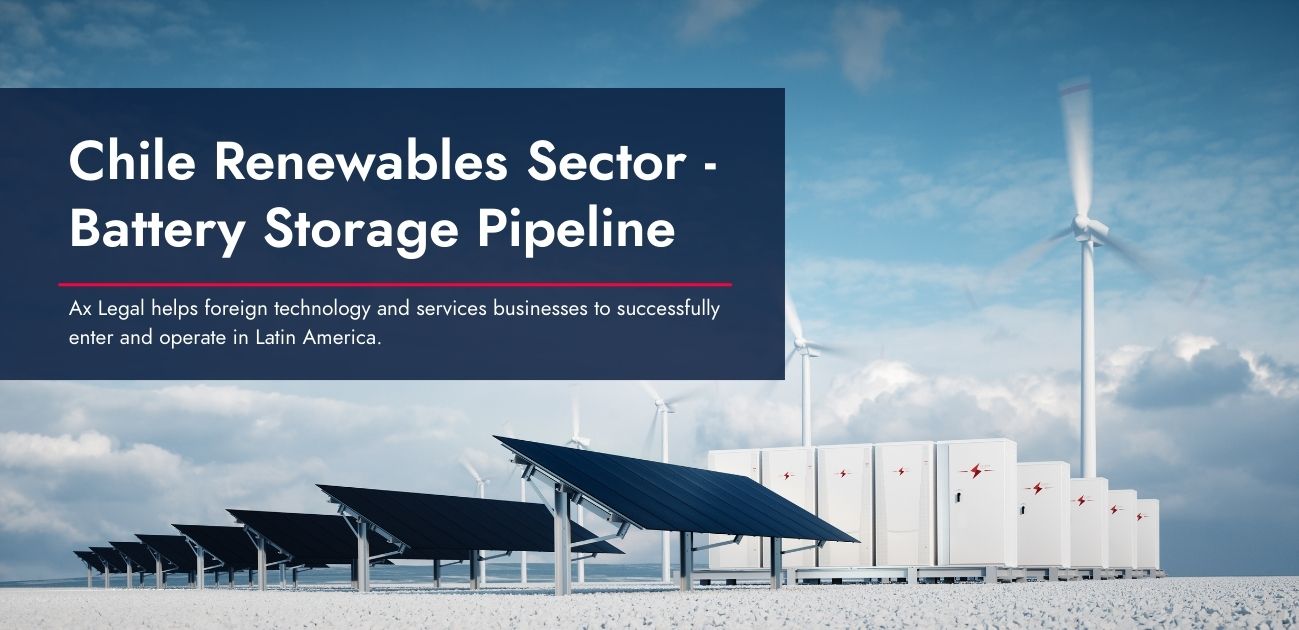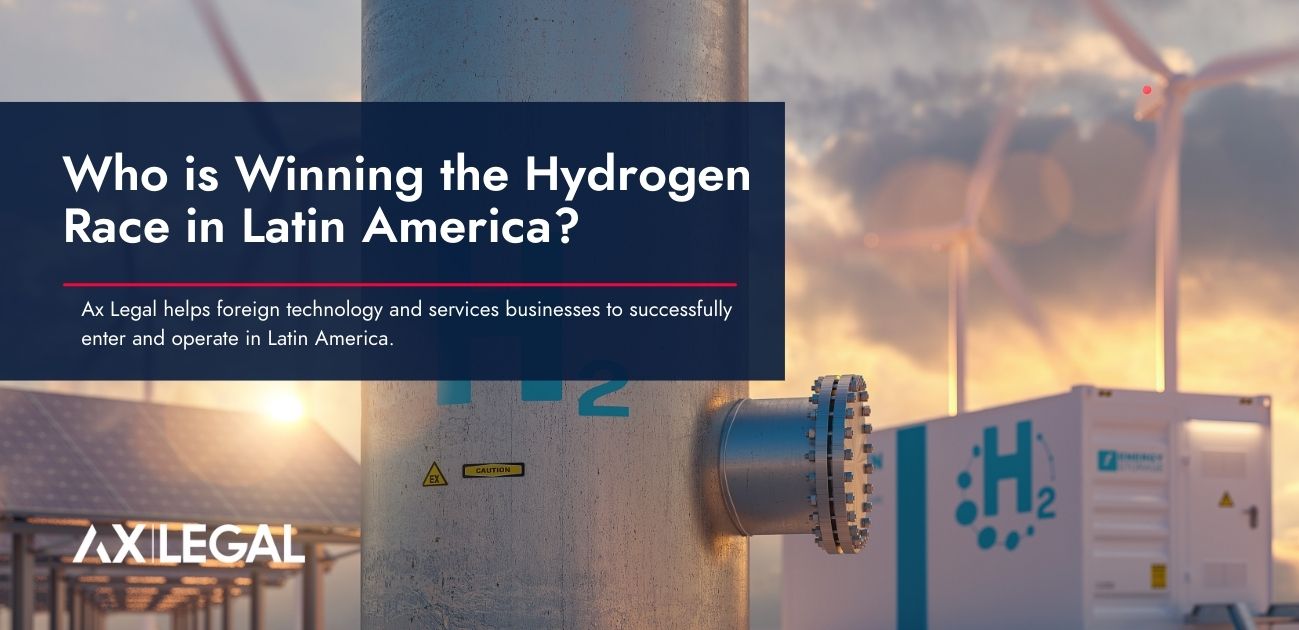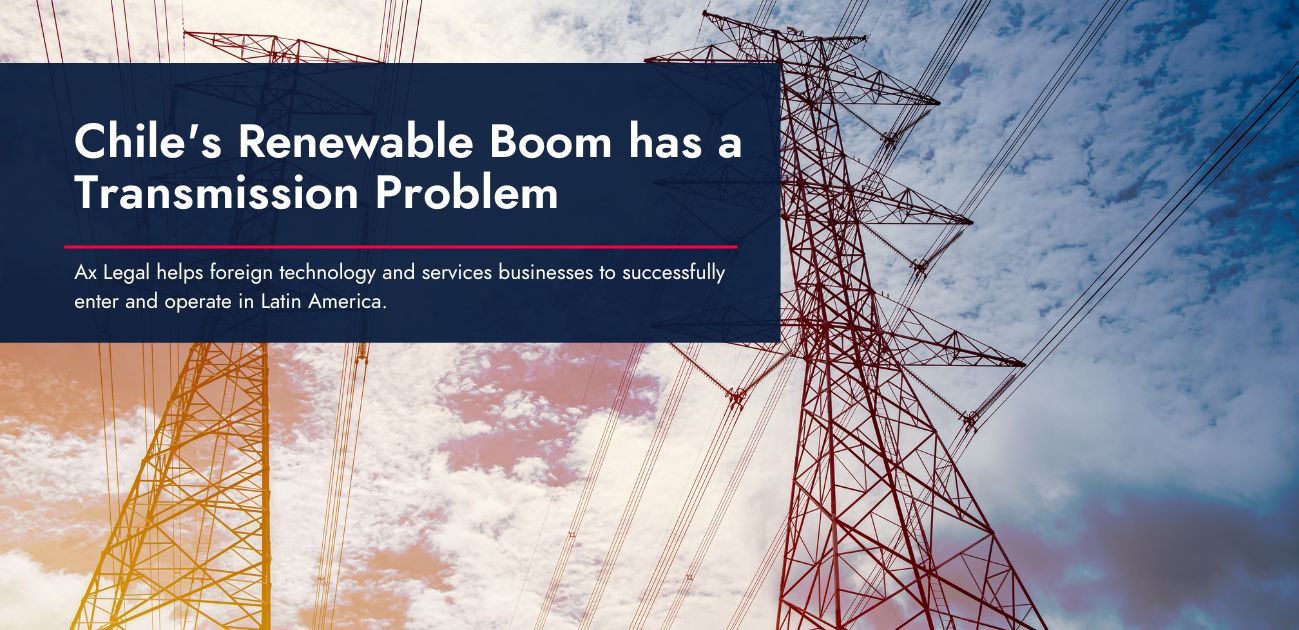Chile Renewables Sector – Battery Storage Pipeline
Chile has taken huge strides over the last 10 years as it has worked towards the goal of decarbonizing its electric sector. Since then, Chile has dramatically increased its solar and wind capacity year over year. It has done so without any major government subsidies.
In 2022, renewables provided on average over 30% of the electricity needed for the national grid. Chile’s National Energy Policy is even more ambitious with aims to reach 80% by 2030; and 100% by 2050. Goals that many experts believe could be possible.
Although it has been impressive what Chile has been able to achieve to date, there are also some immediate challenges that need to be solved to help the country advance further.
The biggest challenge is that transmission infrastructure cannot keep pace with the build out of solar and wind projects. This has led to high levels of dumping, congestion and zero marginal costs for producers. As a result, some projects built over the last few years are experiencing losses which is starting to ring alarms in the industry. This has also made financing for new projects difficult since international financers are aware of the current issues that the Chilean electricity system is facing.
It is important to mention that building out transmission infrastructure will not solve the issue by itself. Chile’s National Electricity Coordinator (CEN) has indicated that greater transmission would not end the problems of curtailment and zero prices, given the solar supply during daylight hours exceeds overall the demand.
It is widely agreed that the most immediate step to help alleviate the problem is the widespread adoption of batteries, which will allow renewable generators faced with low prices during the day to move their injections to the night, mitigating the problem of zero prices and curtailments.
Battery Projects Pipeline
Last year, the Chilean government enacted the electromobility bill that would allow stand-alone storage projects to be paid for the power they inject into the grid. This is unleashing a new wave of investment.
Currently, there is a growing pipeline of projects (+2000MW) that have battery storage components attached to them. There is also starting to be significant number of projects that are pure battery plays.
The 10 largest projects pre-construction in the pipeline according to BNamericas are the following –
|
AES Andes – Pampas Hybrid Park (Under Evaluation) |
With an investment of US$800mn, Papas Hybrid Park will consist of 140MW wind and 252MWp solar capacity. In addition, it will have a 624MW battery storage facility that could provide power for up to five hours. |
|
AES Andes – Parque Terra Energía Renovable (Permitted – Pre-Construction) |
The US$750mn project involves a 350MW wind park, a 513MW solar farm and two battery storage systems. The wind farm will be made up of 50 wind turbines of 7 MW each. Meanwhile, the photovoltaic park will be made up of more than 1 million bifacial panels. |
|
AES Andes – Cristales (Under Evaluation) |
The US$710mn hybrid project will have 379MW of solar PV capacity and 542MW of battery storage capacity. The battery component will be able to provide power for up to 5 hours. |
|
Engie – Pampa Fidelia (Under Evaluation) |
The US$645mn project is a 337MW wind farm and considers a battery storage system. There will be 51 wind turbines of 6.6 MW each and a BESS of 291.2 MW/873.6 MWh with a capacity to store energy for three hours. The battery storage park will be made up of 208 containers. |
|
EDF Renewables – Wayra Wind Project (Under Evaluation) |
The US$624mn project involves 416MW of wind capacity, 198MW of solar and a battery storage system. The energy storage system will use modular lithium-ion batteries with a storage capacity of about 300 MWh per cycle. |
|
Statkraft- Pauna Solar (Permitted – Pre-Construction) |
The US$496mn Solar project will have 671MW of generation capacity and made up of 1,040,760 bifacial panels. The project considers lithium-ion battery container modules of up to 2.06MWh capacity, which will be capable of storing the power generated for approximately four hours. |
|
Generadora Metropolitana – Sol del Loa (Permitted – Pre-Construction) |
The US$480mn project involves changes to its previously approved 110MW Sol del Loa solar PV project, The modifications include ramping up capacity to 640MW in two stages and incorporating a battery storage system. The project will require 1.45 million solar modules of 550 W each and the battery energy storage will push the total capacity to 10.4 GWh. |
|
Colbún – Celda (Under Evaluation) |
The US$450mn project will have a 420MW solar park and 240MW battery storage complex that will be able to provide power for up to 5 hours. |
|
AES Andes – Molten-Salt Energy Storage (Under Evaluation) |
The US$450mn project will repurpose AES Gender Coal plant to a Molten-Salt Energy storage. Renewable energy will be used to heat salts which would generate steam to reach a capacity of around 560MW with both units operating. Power would be injected at peak demand periods. |
|
Sphera Energy – Sol de Caone (Under Evaluation) |
The US$420mn project will have a 420MW solar PV park and considers an 80MW storage facility, involving 94 battery units.
|
What’s Next for the Pipeline?
Energy storage is becoming a big topic given the need to find solutions to the congestion problems that the renewable sector is facing in the short to medium term. Currently, the pipeline for stand-alone battery projects is small but hybrid projects that combine renewables with battery storage is picking up steam.
Battery storage is becoming so important that even the government is getting involved with recent announcements –
- The Chilean National Energy Commission (CNE) will advance with US$211mn battery storage tender. The goal is to incorporate storage capacity into the Lo Aguirre and Parinas substations, to control power flow along the 500kV lines that connect them. The storage facilities must have a minimum capacity, in each substation, of 500MVA/125MWh,
- In addition, the government just announced that they will launch a bill this year to procure large-scale energy storage systems for commissioning in 2026 totalling US$2 billion of investment, on top of 5GWh already being sought for 2027-28. It is projected to be the largest battery storage system in Latin America.
Conclusion
Chile is in a unique position. It has been able to take transform its energy matrix in a very short period of time. The growth of renewables has also uncovered weak points that needs to be addressed if the sector will continue to grow. Battery storage and increasing transmission capacity are at top of the list to help solve these issues but further work will be needed.
Chile’s grid coordinator, CEN, the system operator, presented a roadmap in 2022 which believes need to be worked on given the accelerated electrification of the economy.
- Adopting internationally used wholesale market pricing schemes based on energy offers and payment for sufficiency power
- Incorporate location signal in the transmission payment assignment
- Encourage storage systems and other technologies (grid-forming) to provide the security and flexibility that the system needs and review the minimum requirements for facilities in the technical standards
- Modify the bidding scheme for transmission expansion works
- New design of energy supply tenders for regulated consumers aligned with an energy transition towards a 100% renewable matrix; capacity to contribute network attributes
- Modernize the regulations of the distribution segment
- Update the technical regulation and technical standards for renewable generation technologies
- Integrate advanced network modeling and management tools that work in time domain simulation environments
Many of these are not easy tasks and have been discussed for some time. Chile is a country that punches above its weight so there is optimism that many of these issues can be solved. Until then though, renewable generators will face head winds which can hopefully be eased by increasing battery storage.
Ax Legal is an advisory firm that works with foreign companies in Latin America. Our team of legal and commercial advisors have a distinguished track record of helping foreign technology and services companies to grow and operate in Latin America. Over the years, we have worked with starts up, mid-size businesses, and publicly listed companies. The one common factor that connects are clients is that they are leaders in their field, providing innovative technologies and services to the industrial sectors.
To better understand how we can support you in the Region, please contact Cody Mcfarlane at cmm@ax.legal




 Santiago
Santiago Sydney
Sydney Lima
Lima